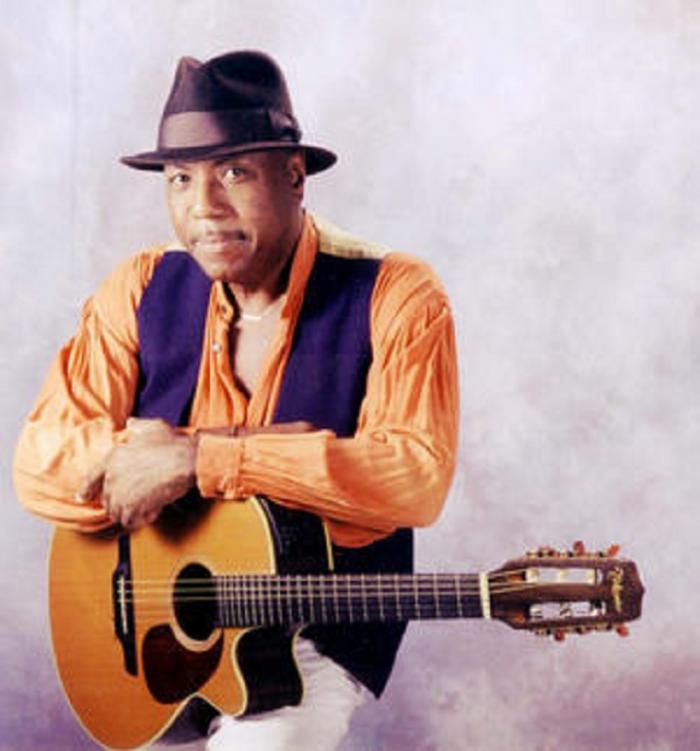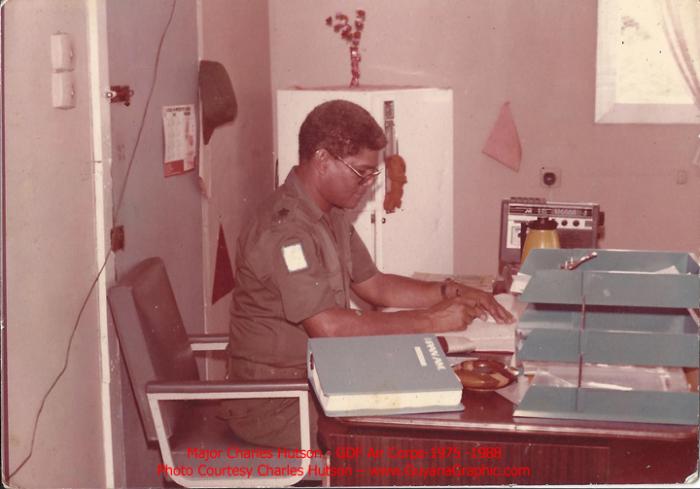Birth Aubrey Cummings was born in the year 1947 and grew up in the Alberttown / Queenstown neighbourhoods of Georgetown, Guyana Discovered talent His decision to develop a career in pop music was influenced by Michael Bacchus and the Heartbreakers. The magic of popular music and show business excited him, and he took up the guitar. He is a self-taught guitarist.
The first band Cummings joined was Bumble and the Saints in 1965–the early days of the string band era. He attended Queenstown Roman Catholic Primary School where he developed a reputation as an artist. However, it was not his art that would make Cummings a household name in Guyana during the 1960s and 1970s, it was his music. The birth of his music career Cummings’ impact on music in the 1960s Bumble and the Saints was one of the bands that consolidated the shift from the big band sounds of Tom Charles and the Syncopaters, Nello and the Luckies, and Al Seales to the new styles and sounds of string bands.
Guyanese string bands and musicians attracted attention in the Caribbean, and in 1965, Bumble and the Saints toured Barbados with Johnny Braff with moderate success. On his return from Barbados, Cummings joined Joe Wong and the Dominators. Cummings’ next stop was with the Music Machine.
The members of the band included Aubrey Cummings, Colin Aaron, George Reid, and King Souflantis. It had strings and brass. The Guyanese “big band” had resurfaced. Music Machine was also the first band since Combo 7 that paid its members monthly salaries. Members of the Music Machine earned themselves “big reputations.”
In Barbados, Cummings would establish an active musical career as guitarist and vocalist. In 1984 and again in 1985, Cummings won the Best Male Vocalist Award in Barbados. During the same period, he consistently won prizes at the Caribbean Song Festivals organized by the Caribbean Broadcasting Union. His guitar work also attracted critical acclaim, and he was a regular contributor to the acoustic guitar festivals organized by Barbados’ National Cultural Foundation. According to Aubrey Cummings, he said that popular music contributed to the healing of Guyana during the 1960s and 1970s and can do so again. His musical career is a reminder of the pervasiveness of music in Guyanese social life.
Throughout his musical career, the influence of race, class, and colour in Guyana during the 20th century can be found in his music. His experiences demonstrated that Guyanese musicians worked hard. This attribute paid off as many of the musicians of Cummings’s era who have migrated established satisfying careers overseas. Overall, it can be said by many that Aubrey Cummings is not only a musician of a generation, he is a cultural hero.
He was found dead in his car at Haggatt Hall, Saint Michael, Barbados in the evening on April 14, 2010
By Kafi Warner






